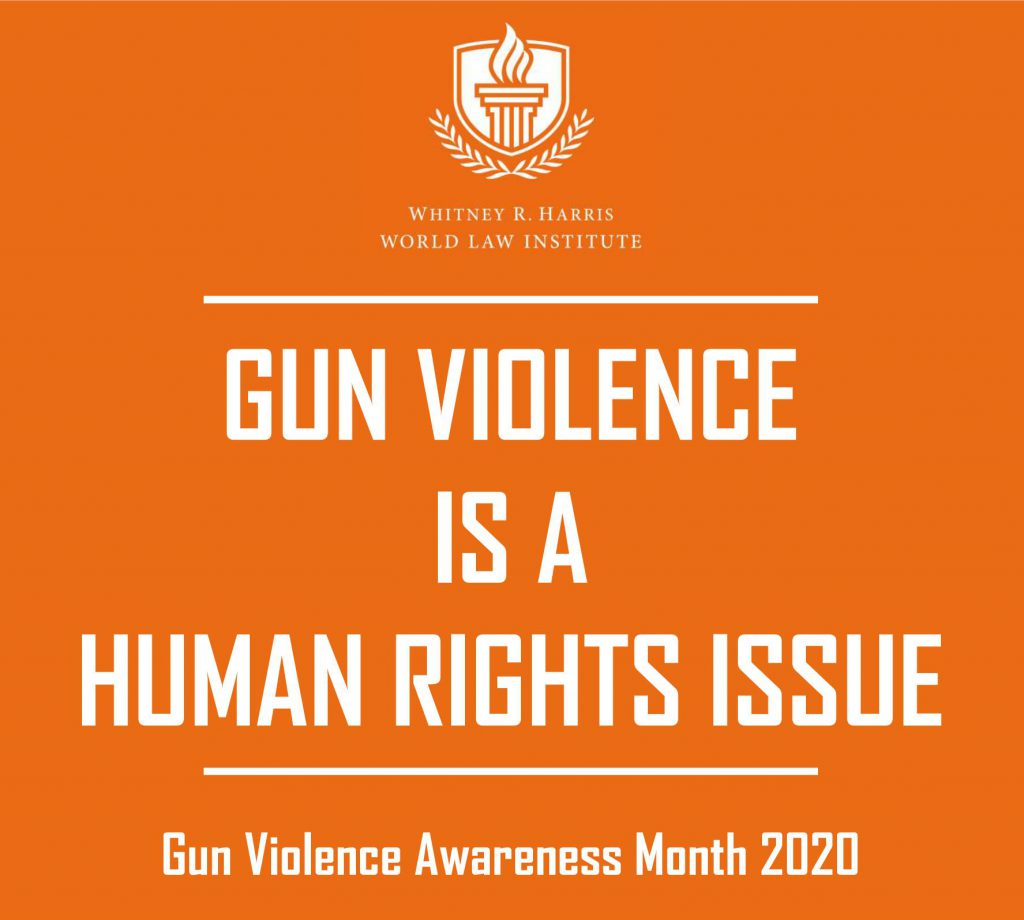By: Jessica Meyers, MPA (Coordinator, St. Louis Area Violence Prevention Commission)
This blog is part of a special series by the Harris Institute’s Gun Violence and Human Rights Initiative and the Institute for Public Health’s Gun Violence Initiative in recognition of National Gun Violence Awareness Month, launched on June 5th for Gun Violence Awareness Day. Throughout this series we will highlight the work being done on this critical issue across campus, the St. Louis region, and the country.
One of the Violence Prevention Commission members captured the importance of equity in our work when they said, “the value of life in one COMMUNITY differs from the value of life in another community in this country and this is where the problems lies.” We have seen systematic disinvestment across wide swaths of north St. Louis City and County. In these communities, access to social determinants of health is desperately lacking. Social determinants of health are the conditions of where we work, play, and live that affect our health. Factors like a lack of access to fresh food, lead contamination levels, generational poverty, and lack of access to mental and physical healthcare are all concentrated in areas that have seen this disinvestment and lead to worse health outcomes, including a higher risk of violence. This is a fact that violence prevention advocates must wrestle with when defining interventions and the reason that racial equity is a guiding principle of the St. Louis Area Violence Prevention Commission.
Such concentrated disadvantage is hardly limited to St. Louis or even to the United States. Countries across the world have high inequity that leads to higher risk of violence. It is for this reason that gun violence should be examined in an international context. With laws on guns, crime, and punishment varying across the world, international documents on human rights provide a universal context to use.
The UN Human Rights Committee considers gun violence to be a violation of the right to life. In “For the Sake of All,” a report on the health and wellbeing of St. Louis black residents, the authors examine life expectancy and how it varies across the region. In Clayton, the average life expectancy is 85 years. Travel just 10 miles east to the Jeff-Vander-Lou neighborhood of St. Louis City and life expectancy for residents drops nearly 20 years. Even within the City, the life expectancy of 67 years of age in Jeff-Vander-Lou is still much lower than the 81 years of life expectancy in St. Louis Hills. Certainly, part of this difference is the disparate risk of violence in addition to the lack of access to other social determinants of health. This calls us to act on violence prevention not only as a public safety, public health, and equity problem for our region, but as a human rights issue.
For more information on the St. Louis Area Violence Prevention Commission and our approach to violence prevention, visit www.stlareavpc.org

